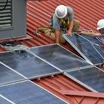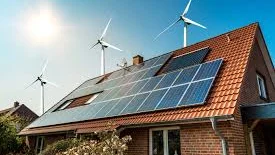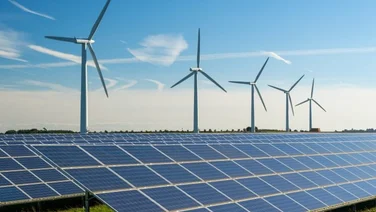- The new predictions would see a typical dual fuel customer’s energy bills fall to £1,683 from July
- President Donald Trump’s tariffs have played a role in the predictions
- Early forecasts are showing a further drop in October, with the cap falling again in January 2026
New forecasts from Cornwall Insight have predicted energy prices will fall by almost 9% when Ofgem announces its July Energy Price Cap thanks in part to Donald Trump’s tariffs causing the wholesale price of gas to fall, meaning the average customer would pay £166 less per year.
The new predictions would see a typical dual fuel customer’s energy bills fall to £1,683 from July, down from £1,849 a year set by Ofgem in April.
Dr Craig Lowry, principal consultant, Cornwall Insight said that its early forecasts are showing a further drop in October, with the cap falling again in January 2026.
These predicted declines, according to Lowry, are a mixture of geopolitical and market developments, including Trump’s decision to introduce tariffs, and the broader impact of these and above-average temperatures. Lowry said these have reduced demand expectations and eased pressure on short-term prices.
The lower energy costs, should they hold, will take some of the pressure off households after energy debts across the UK climbed to a record high of £3.8bn, according to The Guardian.

Get solar panels
With summer approaching, solar panels can help cut your energy bills by utilising the heat. Use the button below to get free quotes from our trusted suppliers.
Despite the fall, the average bill will still be one third higher than before Russia’s 2022 invasion of Ukraine triggered a sharp increase in global gas prices, a trend which was already underway following the end of the Covid-19 pandemic.
While prices may fall, Lowry warned that the market is still highly volatile and with a month still to go until the price cap is announced, it’s still too early to say whether these reductions will hold.
Discussions in the EU around easing gas storage requirements for the coming winter could reduce injection demand and put further downward pressure on prices.
However, the wider geopolitical issues, including the war in Ukraine and the broader economic uncertainty could just as easily push prices back up. Cornwall Insight said it expects a continued level of volatility in both prices and forecasts as markets respond to these ever-changing dynamics.
“We mustn’t get ahead of ourselves,” Lowry said. “We have all seen markets go up as fast as they go down, and the very fact the market dropped so quickly shows how vulnerable it is to geopolitical and market shifts.”
He explained that while it might be easy to conclude that the price fall was down to US tariffs, the reality is that energy storage requirements in Europe, warmer weather, and global trade issues are all contributing to market volatility.
Below is what the typical dual consumption household will look like, based on Cornwall Insight’s figures:

“There is unfortunately no guarantee that any fall in prices will be sustained, and there is always the risk of the market rebounding,” Lowry explained.
“The only real way to protect households from this constant cycle of instability and insecurity is to reduce our dependence on international wholesale markets” Lowry said.
“That means continuing to focus on growing low carbon energy generation here in Great Britain and building a more secure, more sustainable energy future”.







